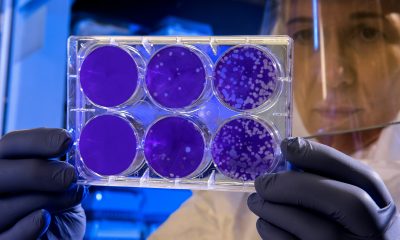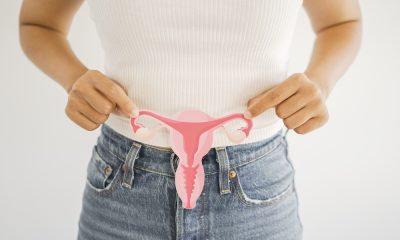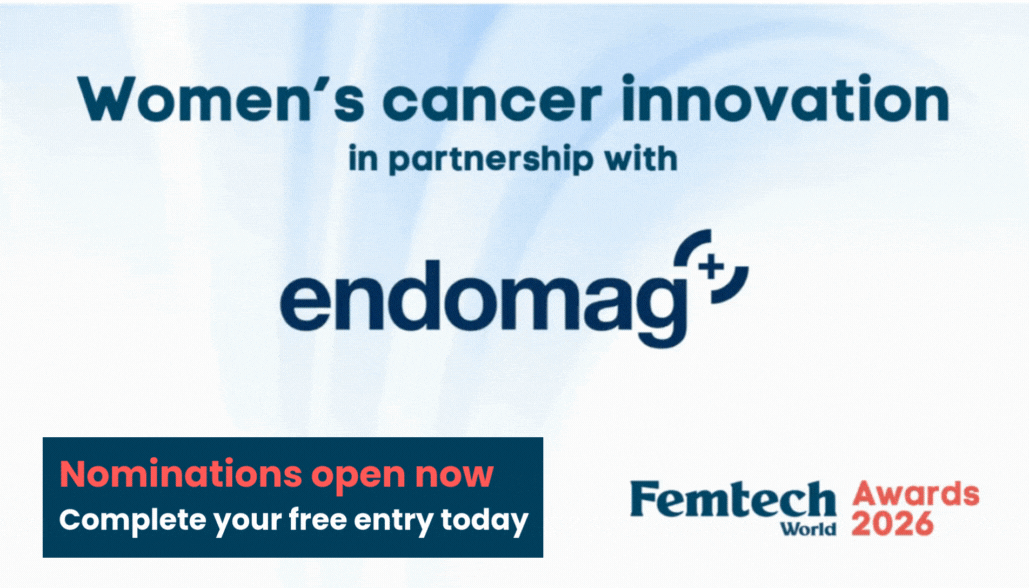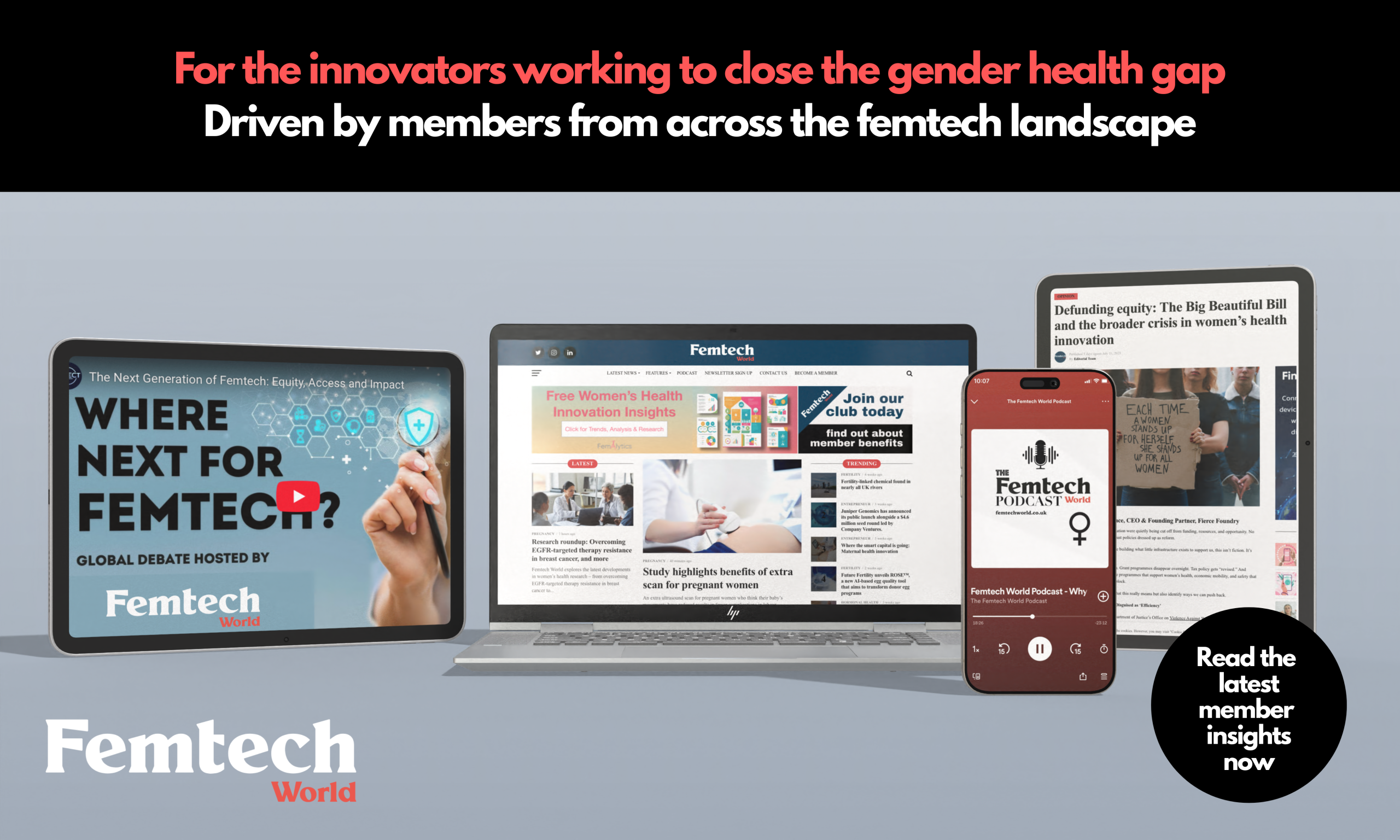Features
“Fertility benefits are the way to go, but European companies are not entirely convinced”
Employer fertility benefits have seen a dramatic rise in the US, but Europeans have not jumped on the trend

From Spotify and Facebook to Starbucks and Clif Bar, a growing number of US companies have introduced family-building benefits. Now, it’s time for Europe to support aspiring parents, says Jenny Saft.
When Jenny Saft decided to freeze her eggs aged 32, she was unaware of the many barriers women face regarding a relatively new procedure that was declared “no longer experimental” by the American Society for Reproductive Medicine in 2012.
“After I spoke to my gynaecologist, I started to do a lot of research and I became really frustrated with the lack of transparency and stigma around this topic,” she says.
“It almost felt like doctors didn’t know how to have a proper conversation about this.”
Egg freezing retrievals increased dramatically from pre-pandemic levels with UK enquiries rising by as much as 50 per cent in the summer of 2020, compared to the prior year.
But although plans to extend the storage limit from 10 to 55 years are a welcome step in enabling women to freeze their eggs when they are younger, cost remains a major barrier to the treatment.
With the average total cost of egg freezing sometimes reaching more than £6,000 and additional yearly costs for storing the eggs, many aspiring mums like Saft are left disheartened.
“Most of these procedures, including IVF, are self-pay treatments. And even if the public healthcare funds partially cover them, it’s in very discriminating conditions,” she explains.
In her native Germany, the national policy reimburses 50 per cent of IVF/ICSI costs for up to three cycles but only for heterosexual couples in which women must be under the age of 40.
In England, whether you are able to access NHS fertility treatment depends on your GP’s postcode, with different regions offering different levels of access to NHS IVF and some offering none at all.
Women can be eligible for three rounds of NHS-funded IVF treatment if they have been trying unsuccessfully to start a family for two or more years, or if they have had 12 or more unsuccessful rounds of artificial insemination.
Unsurprisingly, the Human Fertilisation and Embryology Authority found that the NHS funded only 35 per cent of IVF cycles in England in 2017 – the lowest level ever recorded by Britain’s fertility regulator – forcing many couples to go private or give up on treatment altogether.
This is due to a “scattered” system across Europe, says Saft. “We have to deal with a framework that doesn’t make sense and is not inclusive.
“If we look at the US where the concept of fertility benefits is exploding, we can see that more can be done for these couples.”
Although European healthcare systems are run at individual national levels, they are generally universal, unlike in the US where most citizens are covered by a combination of private insurance and various federal and state programmes.
However, Saft believes we can use this complexity to our advantage. Alongside her co-founder, Tobias Kaufhold, she brought the concept of fertility benefits closer to home by launching Apryl – a tech platform providing fertility benefits and working with employers across Europe.
“One of the biggest healthcare crises of our generation is infertility. Unfortunately, many people are still unaware of it,” she says.
“We started this journey because we realised that if you can’t afford treatment, you won’t be able to access fertility care.
“But if employers can implement strategic benefits, to give people access [to fertility care] they can make a huge statement not just by encouraging a more inclusive approach but by helping employees to plan their families and thrive in their career.”
Although Apryl is still an early-stage start-up, it aims to become the go-to benefits provider for progressive European companies, by offering employees fertility and family planning benefits, including consultations, access to clinics, as well as egg freezing, IVF and adoption.
“We want to be there for anyone in need of support regardless of sexual orientation or status,” says Saft.
“Diversity was something very clear for us from the very beginning and we knew that if we wanted to build this, we had to be something for everyone.”
Destigmatising fertility issues is another topic Saft is passionate about, as numerous studies have shown the major brunt of infertility is disproportionately borne by women.
“An increasing number of women choose to have kids later in their life and I think it’s important to speak openly about things like egg freezing or IVF.
“It’s funny that companies in Europe are still not entirely convinced that fertility benefits are the way to go. But part of the reason why they see this as niche is due to the stigma around fertility.”
Despite a lack of knowledge and a male-dominated VC space, she remains optimistic.
“I think the beauty is that we can develop solutions that can help employers and governments to work together and give more people access to care,” she says.
“In the US such benefits have come naturally because of their healthcare system. In Europe, they come more from a diversity inclusion angle, but I think we will see more companies implementing them soon.
“I also think governments will improve their set-ups and dedicate higher funds to this topic, in the long term.
“The best thing is that we have a business that people believe in and that can actually make a difference in the world.”
Features
Ovarian cancer drug to launch in UK at US price

AbbVie said on Monday that it will launch ovarian cancer drug Elahere in the UK at the same list price as in the US.
The announcement follows President Donald Trump’s push for drugmakers to align domestic prices with the lowest levels paid by comparable high-income countries under his “most-favoured-nation” policy.
The US currently pays nearly three times more for prescription medicines than other developed nations.
AbbVie is in talks with the National Institute for Health and Care Excellence, the UK’s cost-effectiveness watchdog, to ensure the drug is valued fairly.
The company said these discussions will determine when Elahere is launched in the UK. AbbVie did not immediately respond to a request on pricing.
The move comes after Bristol Myers Squibb said last week it plans to introduce its schizophrenia drug Cobenfy in the UK next year at a price matching its US list price.
AbbVie was one of 17 drugmakers to receive letters from President Trump in July outlining how they should cut prices to match those paid overseas.
Unlike in the US, where market forces determine drug prices, European governments typically negotiate directly with companies to set prices for their health systems.
Elahere, available in the US since 2022, belongs to a new class of therapies called antibody-drug conjugates, sometimes referred to as “guided missile” drugs.
These treatments use antibodies to deliver chemotherapy directly to cancer cells with a specific protein on their surface, allowing for more precise treatment while reducing harm to healthy tissue.
News
Endometriosis linked to hundreds of conditions across the body, study finds

Analysis of millions of health records shows endometriosis is connected to more than 600 conditions, including migraines, asthma and digestive disorders.
The research used algorithms to compare medical histories of people with and without endometriosis, confirming known associations and revealing new ones.
Scientists at the University of California, San Francisco examined data from the University of California’s Health Data Warehouse, which holds records for around eight million people from 2012 onwards.
Findings ranged from reproductive and autoimmune disorders to less-discussed conditions such as gastroesophageal reflux disease, asthma and vitamin D deficiency.
Endometriosis occurs when cells similar to those lining the womb grow outside it and on nearby organs.
Umair Khan is a PhD student in the biological and medical informatics programme at UCSF.
Khan said: “We identified hundreds of health conditions significantly associated with endometriosis, ranging from reproductive disorders and autoimmune diseases to migraines, asthma and gastrointestinal conditions.
“Many of these associations were present even before a formal endometriosis diagnosis, and almost half were replicated in an entirely separate dataset.
“We hope this study validates patients’ lived experience that endometriosis often comes with a variety of other health challenges.”
The large-scale approach allowed researchers to include millions of participants, making the study broader than previous research which usually focused on single conditions such as infertility.
Two notable findings stood out.
Women with endometriosis appeared less likely than others to have high cholesterol – which Khan described as “intriguing, given growing interest in statins as a potential treatment for endometriosis.”
Statins are cholesterol-lowering medicines that are also being explored for their potential to reduce the progression and symptoms of endometriosis.
The study also found a strong association with migraines, suggesting the two conditions may share biological pathways. Migraines often appeared in patients’ records before an endometriosis diagnosis.
Experts said the findings reinforce the view of endometriosis as a systemic disease, not just a pelvic disorder.
Inflammation, immune dysregulation and molecular signals such as microRNAs may help explain its widespread effects.
Research also suggests shared genetic pathways could account for links with conditions like migraine.
Clinicians note that understanding endometriosis as a whole-body condition highlights the importance of early recognition and management.
Patients may benefit from anti-inflammatory medicines not only for pain but to reduce broader systemic effects.
Researchers added that big data methods like those used here could help guide more personalised treatment strategies.
Work is now underway to apply predictive modelling and artificial intelligence to identify those at higher risk and to explore whether existing medicines can be repurposed for treatment.
Fertility
IVF innovation: What you need to know about global regulatory pathways in 2025

By Juan A. Jiménez, founder and CEO, FindDBest IVF
In the fast-moving world of fertility innovation, building a game-changing medical device or diagnostic is only half the journey.
The other half? Getting it approved — and into the hands of those who need it.
At FinDBest IVF, we work with IVF and ART (Assisted Reproductive Technology) device manufacturers around the world to help them navigate local regulations, identify distributors, and accelerate global expansion.
Over the past few months, we’ve been breaking down country-by-country regulatory updates in a series of accessible articles.
If you’ve missed them, don’t worry.
Here’s a quick, plain-language roundup of what’s new (and what’s changing) in the major regions IVF innovators are targeting in 2025 — from the United States and Europe to Brazil, China, the Middle East, and beyond.
United States – Getting Smarter with AI and Safer with UDI
The U.S. Food and Drug Administration (FDA) remains a global gold standard. But in 2025, two updates stand out:
- Quality System Alignment: The FDA has officially aligned its quality system with ISO 13485:2016 — a widely accepted international standard. This change means U.S. and European manufacturers now speak a more “common language” when it comes to quality documentation.
- AI Oversight & UDI: The FDA’s Digital Health division now requires AI-based software (like embryo scoring tools) to include performance monitoring and retraining protocols. Also, UDI (Unique Device Identifier) submission to the FDA’s database is mandatory for traceability. This affects any embryo kit, lab platform, or culture system sold in the U.S.
Tip: If you’re developing AI software for embryo selection or any connected device, plan early for post-market data collection and ongoing validation.
China – Stricter for AI, but More Open to Global Data
China’s regulator, the National Medical Products Administration (NMPA), has doubled down on innovation — and caution.
In 2025:
- AI-powered devices are increasingly treated as Class III — the highest-risk category — especially if they influence embryo transfer decisions.
- However, NMPA now accepts overseas clinical data in some cases (if the population data is relevant), reducing the need for local trials.
Also, connected IVF devices must now integrate with China’s UDI cloud system, and submit a cybersecurity risk report as part of the approval process.
Tip: Get local regulatory advice early — and expect your AI device to be subject to the most rigorous pathway.
European Union – CE Marking Under the MDR
Europe’s Medical Device Regulation (MDR) is in full effect, and IVF-related products like culture media, incubators, embryo transfer catheters, and AI software fall under tighter scrutiny than in the past.
What’s new:
- Classifications are stricter — many IVF consumables are now Class IIb or even Class III.
- UDI and post-market reporting are mandatory.
- Software (SaMD) requires usability testing, transparency around algorithms, and cybersecurity protection.
The CE Mark still unlocks the entire European market — but earning it now takes more time, documentation, and risk management.
Tip: Plan for at least 6–12 months to get through CE marking, depending on your device class.
ASEAN – Harmonized in Theory, Fragmented in Practice

Juan A. Jiménez
The Association of Southeast Asian Nations (ASEAN) introduced the AMDD (ASEAN Medical Device Directive) to harmonize device registration — but the reality is still very country-specific.
- Each country requires separate approval, despite using the same CSDT (Common Submission Dossier Template).
- Some markets (like Singapore and Malaysia) are faster and more tech-driven.
- Others (like Indonesia or Vietnam) still require local clinical data or language-specific labeling.
Tip: Use a single ASEAN-friendly dossier and localise as needed. Don’t assume one approval unlocks all 10 markets.
Latin America – Patchwork of Rules, Rising Demand
IVF demand is rising across Brazil, Mexico, Colombia, and Argentina, but regulations vary widely:
- Brazil (ANVISA): Class III/IV devices need a local GMP certificate and may face long timelines (9–18 months).
- Mexico: Recognizes CE/FDA under its “Equivalency Pathway,” which can fast-track approvals.
- Colombia and Argentina: Local sponsor/distributor is mandatory, and digital portals are evolving.
Also, Brazil and Mexico both require product documentation in Portuguese or Spanish, and some devices must comply with local technical standards.
Tip: A smart local partner who knows the IVF space is the fastest path to compliance.
Middle East – Local Sponsors + UDI = Mandatory
Key IVF markets in the Middle East — including Saudi Arabia, UAE, Egypt, Jordan, and Qatar — continue to grow. However, nearly all require:
- A local “Authorized Representative” (AR) or license holder
- UDI labeling (especially in Saudi Arabia under the Saudi-DI program)
- In some cases, bilingual labeling (Arabic + English)
Some authorities, like the UAE’s MOHAP, offer relatively quick review times (~45 working days), while others (e.g. Egypt or Bahrain) are tightening post-market requirements and traceability rules.
Tip: Don’t underestimate the value of an experienced local sponsor — they often control the registration certificate.
Australia & New Zealand – Gold Standard and Gateway
Australia’s Therapeutic Goods Administration (TGA) is globally respected. In 2025:
- UDI is mandatory starting July 2026 for higher-risk devices.
- AI software is regulated under SaMD (Software as a Medical Device) rules.
- Post-market vigilance requirements are increasing, with hospital-level reporting becoming mandatory in 2026.
New Zealand, meanwhile, repealed its planned regulatory overhaul. That means the WAND system — which only requires notification, not approval — continues for now.
Tip: Use Australia for your “gold standard” approval; use New Zealand for speed-to-market.
What This Means for You
Whether you’re developing AI-based software, culture media, cryopreservation devices, or genetic diagnostics — regulatory strategy is now core to your go-to-market plan.
The good news? There are clear pathways. The not-so-good news? They’re all a little different.
That’s where FinDBest IVF comes in.
We help medical device manufacturers:
- Find local regulatory-savvy distributors or license holders
- That understand country-specific timelines and dossier formats
- Stay ahead of new UDI, SaMD, and post-market changes
- Expand globally, faster — with fewer surprises
Want to connect with IVF-focused partners in any of these regions?
Email us at [email protected] or visit www.findbestivf.com

 News10 hours ago
News10 hours agoMothers’, not fathers’, mental health directly linked to their children’s, study shows

 Menopause5 days ago
Menopause5 days agoNew report exposes perimenopause as biggest blind spot in women’s health

 Fertility8 hours ago
Fertility8 hours agoScientists turn human skin cells into eggs in IVF breakthrough

 News3 weeks ago
News3 weeks agoThe Future of femtech: Rebuilding the investment landscape

 News1 day ago
News1 day agoDaily pill could delay menopause ‘by years,’ study finds

 News4 weeks ago
News4 weeks agoUCL spin-out raises £2.5m to improve infant health with breast milk microbiome

 Insight4 weeks ago
Insight4 weeks agoWeightWatchers debuts menopause programme with Queen Latifah

 Diagnosis4 weeks ago
Diagnosis4 weeks agoWomen in UK with PCOS facing widespread failures in treatment, report finds






























Pingback: Amazon to expand access to fertility and family-building benefits - FemTech World